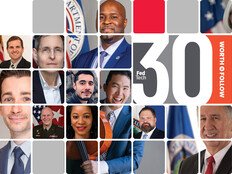VA CIO Calls for Transformation
The path to success for political appointees in federal IT is well established: Pick two or three keystone projects, do them well, and leave with a sterling reputation that paves the road for future success.
LaVerne Council received that same advice before starting her job as CIO at the Department of Veterans Affairs this past July. With a $4 billion IT budget and more than 8,000 employees, the VA has one of the largest and most complex technology enterprises within government.
The idea to get in and get out makes sense — to a point.
“People say you only have so much time and so many hands, but honestly, it was very hard for me to fall into that,” Council said Thursday, at a GITEC event in Washington D.C. “I had to do some soul-searching and think about who I am and how I’ve built myself over the last 30 years. As a leader, I have to have the courage to act on reality, even if that means more work and making things harder on myself.”
Council came to government from the private sector, where she had held executive positions at Dell and Ernst & Young and served as the CIO at Johnson & Johnson before starting her own advisory firm.
“With all the pressures of working in government as a political appointee, why not just kick the rock down the road?” Council asked. “Because that rock might be a diamond.”
Council, in her first public speech as VA CIO, described an ambitious transformation plan for the department’s information technology. While she avoided specific details, Council said the transformation would focus on the business cases around IT and using increased measurables for specific projects to make the most of finite resources.
“You have to show people you can win and make an impact,” Council said. “Wins change the mood quickly, drives energy to the team and gets everyone hyped. We want to target projects that can be done quickly while keeping an eye on more transformative projects down the road.”
Council said projects will be divided into three categories: quick wins that can be completed in the next six months; changes that can be made in the near future (six to 18 months); and future initiatives that can be completed 18 to 36 months down the road.
The talk of change comes as the VA prepares for an unprecedented wave of veterans hitting retirement age along with other baby boomers. As that large group requires more healthcare services, Council said, the VA’s technology infrastructure will need to be prepared to provide support.
“We want to support veterans from their end of active duty to their end of active life,” Council said. “We can look around for someone else to do it, but that person may never come. If we want it done now, we have to do it. That’s the reality and this is something we can do.”








